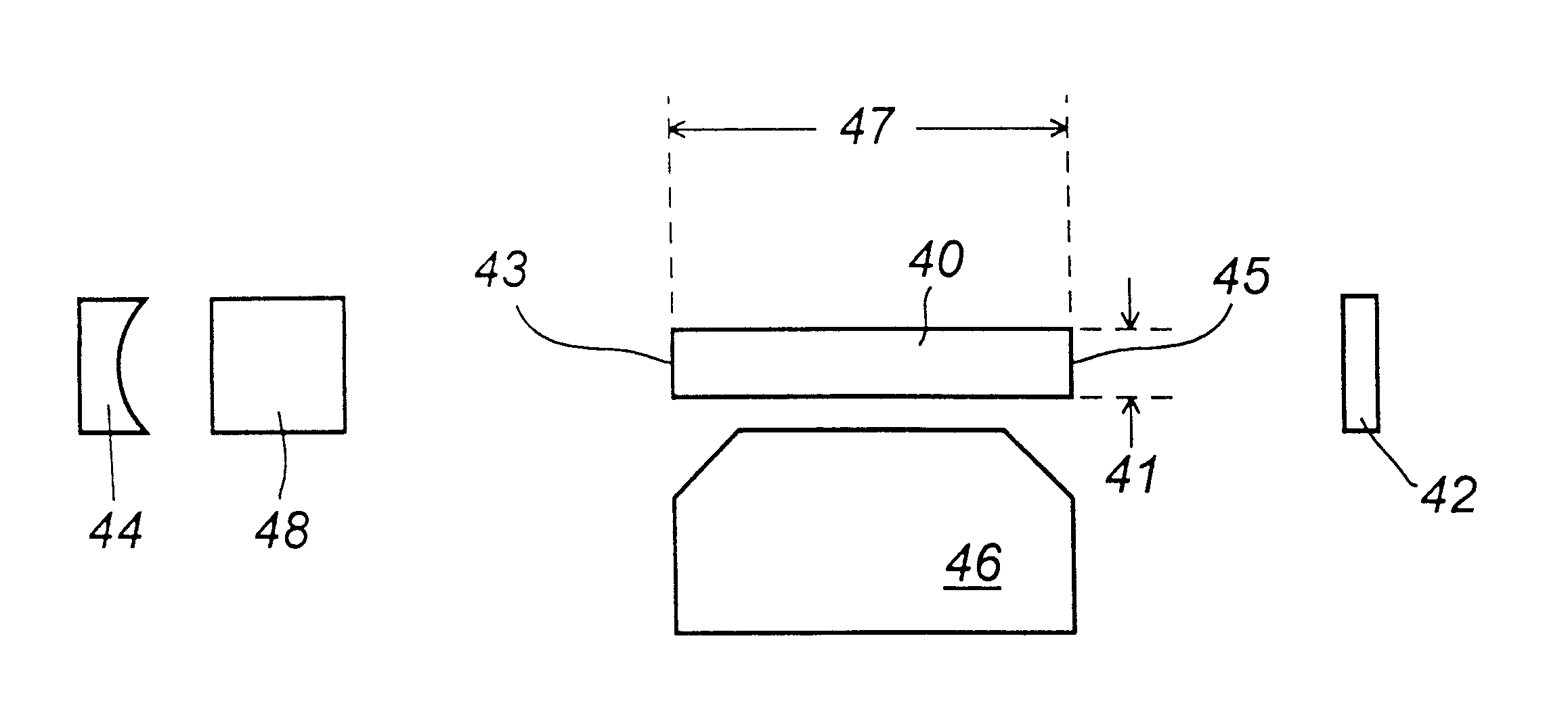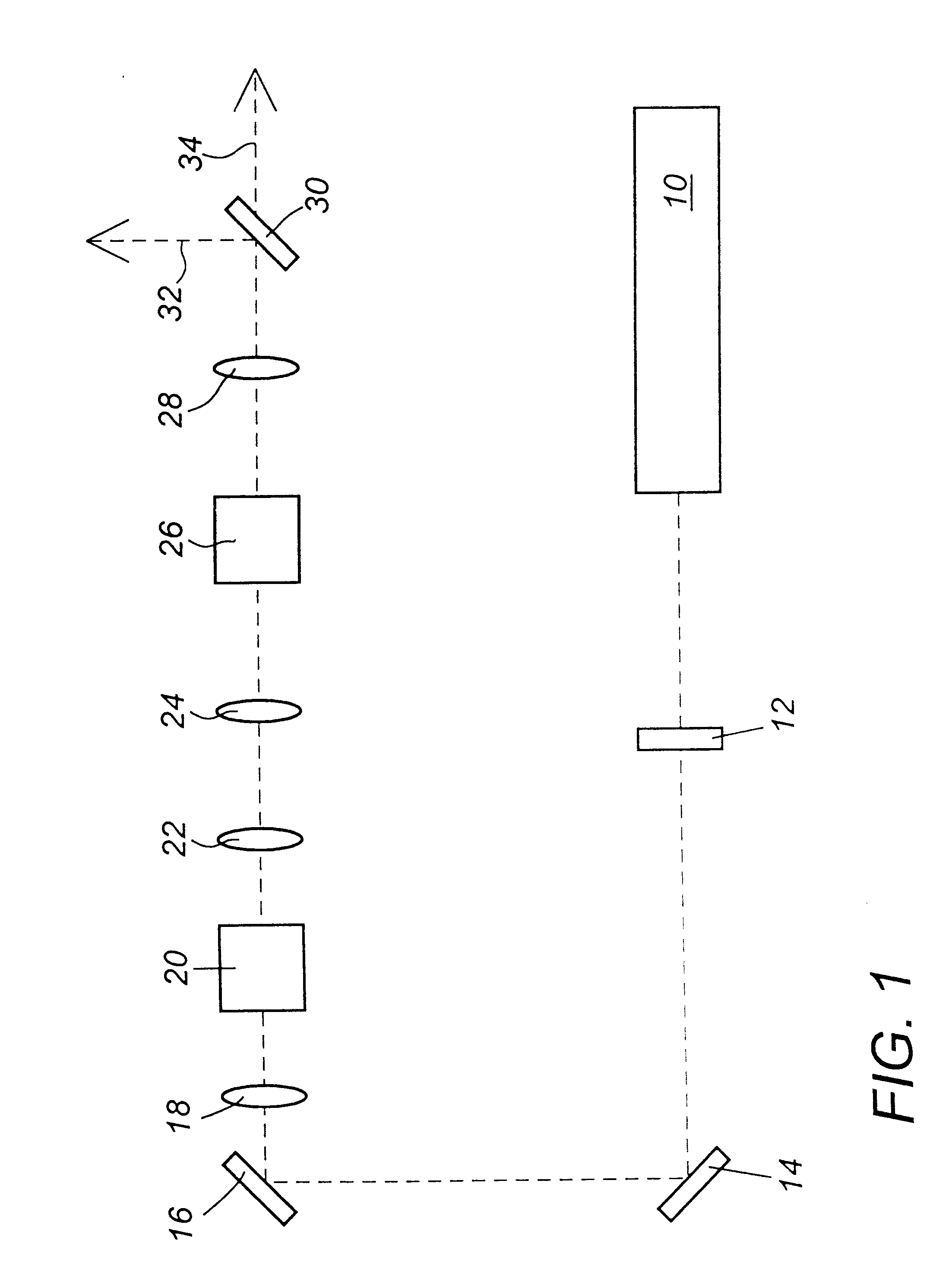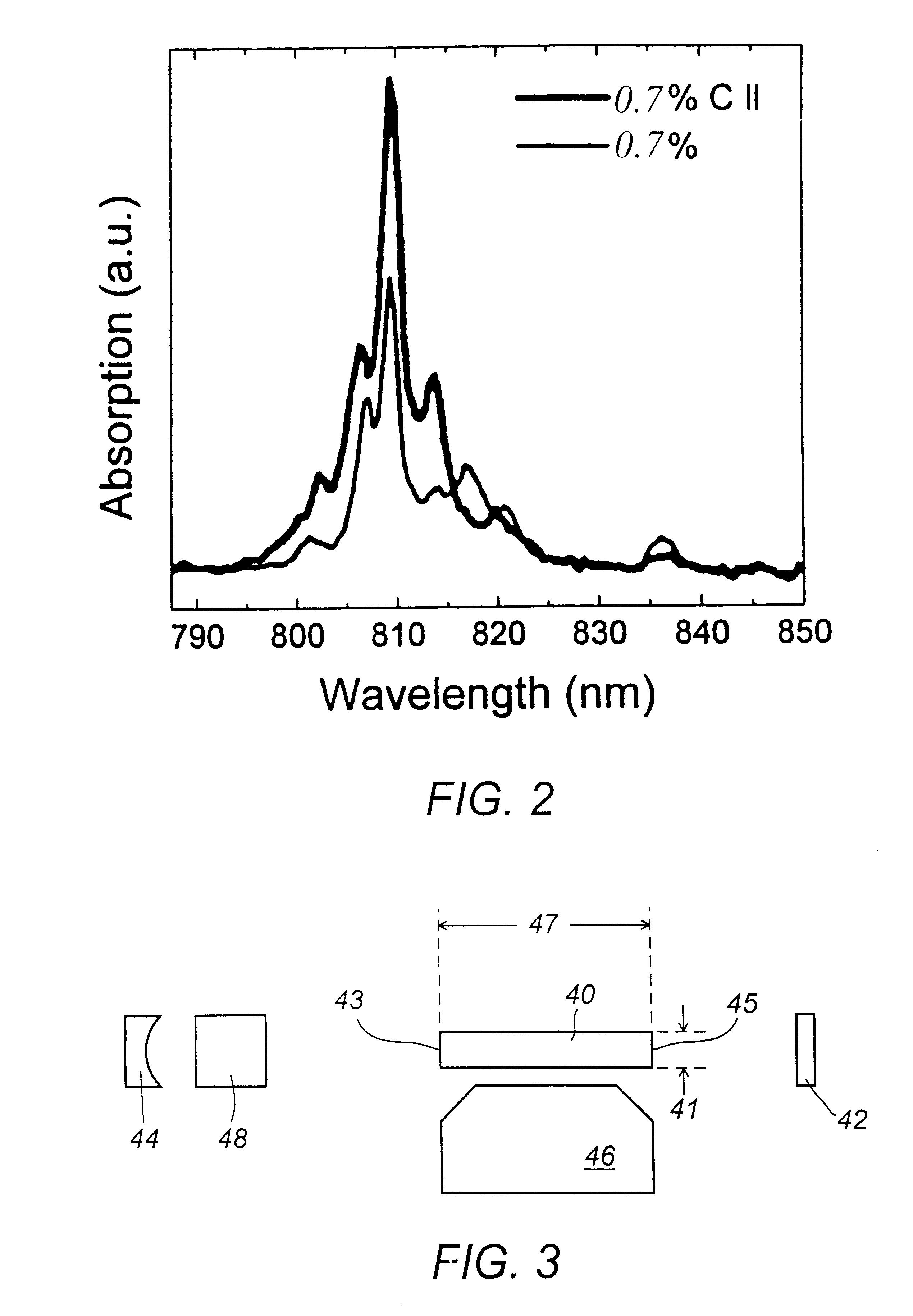Nevertheless, the use of broad-band, poorly-focused pump
radiation is undesirable because pump radiation is absorbed in portions of the gain medium other than within the resonant
modes of the laser.
Pumping portions of the gain medium that are not within the resonant
modes does not result in laser action and generates heat that must be dissipated, and so can limit the range of
usable pump intensities.
A second undesirable aspect of the inefficiency of flash-lamp excitation is that the
broadband radiation of flash-lamps is not well matched to the task of pumping the
dopant ions within the resonant
modes to the desired excitation levels.
Materials suitable as solid-state gain media tend to have imperfect
crystal structures with comparatively broad absorption bands and with significant levels of defect-mediated absorption for comparatively low-energy photons.
Solid-state lasers are generally used in high power applications, with corresponding high levels of input pumping power and high levels of heating of the gain medium.
The cooling of solid-state gain media, whether using
coolant based refrigerators or using solid-state refrigerators, is not wholly satisfactory because solid-state gain media are generally poor thermal conductors so that the interiors of solid-state gain media are in poor thermal communication with the surfaces through which cooling may occur.
There is consequently a limit to the rate at which heat can be extracted from the pumped portion of the gain medium by cooling.
To make matters worse, solid-state gain media tend to be particularly ill suited to excessive heating conditions.
Consequently, heating of the solid-state gain medium is frequently a limit on
system performance.
The various problems associated with flash-lamp pumping of solid-state gain media have historically limited the applications for which solid-state lasers were considered appropriate.
Although
semiconductor lasers can efficiently pump solid-state gain media, the maximum
power output of semiconductor lasers is lower than is desirable for many solid-state laser applications.
While an end-pumped configuration is very useful for efficiently coupling pump radiation from a semiconductor laser into the gain medium of a solid-state laser, there are practical difficulties in accomplishing the
beam shaping and end coupling of the semiconductor laser to the gain medium.
Economically providing the appropriate sophisticated lens
assembly to function as the
beam shaping optics that efficiently couple the elongated output from a semiconductor
diode array into the end of a solid-state gain medium is difficult.
The alignment of the individual fibers to the individual emitters of the semiconductor laser bar is a difficult and expensive task.
Regardless of whether a sophisticated lens
assembly or
fiber bundle coupling is used to couple the output of the semiconductor laser into the solid-state gain medium, the use of an end pumping configuration requires the use of
optics that either are difficult to align and consequently expensive or are readily useable but expensive.
This presents two distinct sets of problems.
First, there are problems to be overcome in coupling multiple semiconductor pump lasers to a solid-state laser in an end-pumped configuration.
Such optics might accommodate only a single semiconductor
laser array and are not readily modified to accommodate multiple semiconductor laser arrays.
Consequently, there may be
physical space limitation problems that make it impractical to use pump sources to create higher pumping intensities in end-pumped lasers.
A second problem is that the
scalability of end-pumped solid-state lasers is fundamentally limited because all of the pump power passes through a single, confined portion of an end face of the solid-state gain medium.
The total incident power that may be applied to the gain medium is limited by the fracture
energy density of the gain medium.
Application of greater pump intensities to the end face of the gain medium can cause the gain medium to fracture.
For gain media that exhibit significant
thermal lensing effects, such a localization of heat input is particularly undesirable and detrimental to beam quality.
The localized thermal loading associated with end pumping means that end-pumped lasers will generally be more limited as to the levels of
optical pumping power that can be coupled into the solid-state gain medium in a reliable manner.
Side pumped lasers offer some promise but, as is discussed briefly above, side pumped solid-state lasers tend to not effectively utilize input pump radiation.
On the other hand, the geometry of the Alcock patent's laser introduces a number of different problems.
A first problem with the geometry of the Alcock patent's laser is that the Alcock laser is not readily compatible with high repetition rate
pulsed laser operation of the type typical of Q-switched solid-state lasers.
Variations in the thermal lens created at the pump surface of the Alcock laser's gain medium can introduce an unacceptable level of variations into the performance of the Alcock laser under pulsed operating conditions.
For repetition rates faster than 1 kHz, on the other hand, time variation in the thermal lens at the surface of the Alcock laser introduces variations in the output of the Alcock laser so that the output beam quality deteriorates to approximately one and one-half times the
diffraction limited performance and significantly worse at higher repetition rates.
The Alcock patent's laser is thus ill suited to high repetition rate pulsed operation.
A second problem with the laser geometry described in the Alcock patent is that the laser geometry of the Alcock patent necessarily introduces high levels of diffraction losses to the solid-state laser system.
As such, the gain mode of the laser suffers significant diffractive losses through the side face of the gain medium.
The level of diffractive losses experienced for practical lasers attempting to adopt the Alcock patent's design are sufficiently high as to limit the optical output power from such lasers.
 Login to View More
Login to View More  Login to View More
Login to View More 


